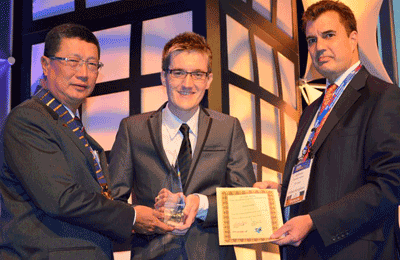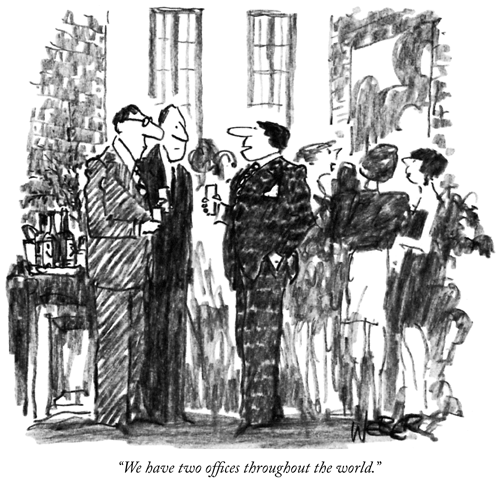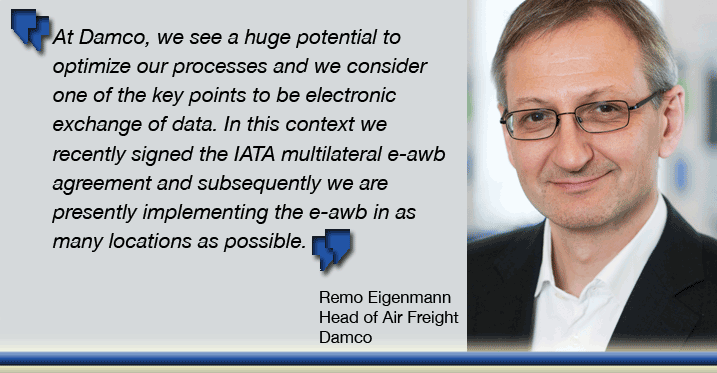
FlyingTypers
recently had the rare pleasure of chatting with a senior industry figure
possessed of the intellectual dexterity and conversational chutzpah
to link the glamour of Hollywood to bills of lading, and compare the
content of a forthcoming conference to lovemaking. No mean feat, readers!
This gem of an interviewee was none other than the ever-charming Stanley
Lim Hwee Hong, President of FIATA.
Part one of our exclusive follows . . .
 IATA’s annual World Congress will be hosted at Singapore’s
Suntec Convention and Exhibition Center October 15-19. Before sharing
his kaleidoscopic views on the transport industry, Lim said he was expecting
this year’s meeting to be a resounding success.
IATA’s annual World Congress will be hosted at Singapore’s
Suntec Convention and Exhibition Center October 15-19. Before sharing
his kaleidoscopic views on the transport industry, Lim said he was expecting
this year’s meeting to be a resounding success.
“Shopping for priorities in a Congress like this one is like choosing
between better and best,” said Lim. “We have a lot to report
and deliberate upon with regards to the Air Cargo Modernization work
that FIATA is doing with IATA. There is a very interesting new approach
to FIATA Vocational Training programs that will be discussed in the
ABVT. We have exceptional speakers in Customs, security, intermodal
transport, and the new Logistics Performance Index, where FIATA cooperates
with the World Bank—they will have their own physical presence
at the Congress. Mr. Tony Tyler has also promised to speak about the
way FIATA and IATA members can ‘deliver solutions together’.”
He said attracting 900 participants
to Singapore would be viewed as a moderate success, 1,000 a decent success,
and 1,500 an enormous success. “2,000 would be a real problem;
where do we put them all?” he laughed. “Besides the joke,
success is almost invariably reflected in numbers. I do not deny that
we can do better than we have done for some years, but if the trend
we see in headquarters is maintained, we will be on record numbers—we
have seen more or less 15-20 percent more year on, year off.”
The Singapore exhibition will follow up
on from some of the achievements of last year’s Los Angeles meeting,
which Lim said was a standout success, not least because of the greater
understanding reached with the Federal Maritime Commission regarding
the delivery of cargo without presentation of the original bill of lading.
“The Commissioner’s views
on sustainability openly echoed the themes of our position paper on
sustainable transport and logistics and transport-related emissions—one
could say these were important political achievements,” he said.
“On the other hand, we made record numbers and received favorable
echo in the press.”
Asked why forwarders should fly from all
corners of the globe to attend the World Congress in Singapore, Lim
was effusive and clear. He believes the potential of combining networking
and advocacy, as well as the opportunity to debate policy, standards,
regulatory compliance and vocational training at the highest level,
is not a combination available anywhere else.
 FIATA
President Stanley Lim, (left) and Andrew Kemp, (right) Regional Director
TT Club (Award Sponsor) present the Young International Freight Forwarder
of the Year award to Daniel Terbille of UTi South Africa in Los Angeles
in October 2012. For More about Daniel's paper click here. FIATA
President Stanley Lim, (left) and Andrew Kemp, (right) Regional Director
TT Club (Award Sponsor) present the Young International Freight Forwarder
of the Year award to Daniel Terbille of UTi South Africa in Los Angeles
in October 2012. For More about Daniel's paper click here.
“Do you remember what Ian
Gordon, our intern, wrote last year? He wrote, inter alia, ‘As
an intern at the offices of FIATA, I found myself in sunny Los Angeles
for the proceedings at a hotel in Beverly Hills. TIA had organized the
details with a certain flair and pizzazz so unique to Hollywood-country.
It was my first time attending a FIATA World Congress. I woke up on
the first day unsure of what to expect. It was only on my way to the
opening ceremony, that I began to understand the magnitude of the organization
and the power it has to unify the freight forwarding industry all over
the world.’”
“You may certainly make very good
business also outside of FIATA, this is unquestionable, but if you want
to be on top of the issues that run through our sector in life size
and real time, then you must be part of it, this is not something you
can watch on TV. Please forgive my impetus, but there is only one way
of making love: you must be there.”
FIATA’s World Congress opens with
a golf tournament. Asked if holding such a leisure event was incongruous
in such a tough business climate, Lim was adamant. “Well, not
everyone plays golf, but I am a golfer and I thoroughly enjoy it,”
he said. “It is traditional for FIATA to have a golf tournament
at Congress and so far it has been rather successful, why turn it down?
We tried with tennis, but it did not work, so we turned it down. If
golf works, why pack it in?”
Indeed!
Lim describes FIATA’s Young International
Freight Forwarder Award as a global benchmark.
“This has been running for over
10 years and has introduced in our sector the concept that you are as
good as me and we work in the end in the same sector, be it in Asia,
Europe, Africa, or anywhere else,” he said. “The award is
giving the enormous work done by the ABVT the visibility that it deserves.”
Sky King
|







